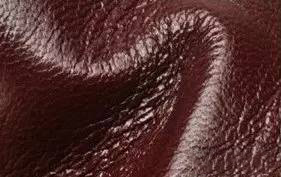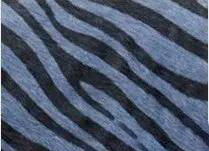Real leather refers to natural leather, which is processed from animal skin. According to their types, they mainly include pig leather, cow leather, sheep leather, horse leather, donkey leather and kangaroo leather, and a small amount of fish leather, reptile leather, amphibian leather, ostrich leather, etc. Cow leather is divided into cattle leather, buffalo leather, yak leather and yak leather; Sheepskin leather is divided into sheep leather and goat leather.
What it is: the top layer cow hide is the epithelium of the cow's body. Its surface has primitive skin characteristics, and is composed of a fiber layer similar to fluff and a slightly loose transition layer closely connected with the fiber layer.
Advantages and disadvantages: the surface pores and texture of the first layer of cow leather are clear, with good natural characteristics, flat and soft appearance, solid and elastic texture by hand touch, but it is relatively easy to damage.
Identification: identify the quality of the first layer of cow leather and observe whether the cross section of the leather is intact. If it is a top-quality cow hide, you can obviously see the compact cross-sectional structure; However, if it is a low-quality first coat cow leather, its cross-section looks very rough.
Cleaning and maintenance:
1. It should be cleaned frequently to keep the pores on the surface of the cow leather from being blocked by dust, and the indoor ventilation should be maintained frequently.
2. When cleaning at ordinary times, be sure to use pure cotton cloth or silk to wipe gently after wetting. After wiping, spray it again with BILIZHU or polishing wax to keep it bright and clean.
3. If there is a ballpoint pen print, it can be removed by gently wiping it with a rubber within the effective time.
4. Avoid exposure to sunlight, fire, water, sharp objects and contact with chemical solvents.
5. Keep dry and store in a cool and ventilated place.
Distinguish cow leather, pig skin, horse skin and sheep skin
Different types of leather have different characteristics and uses. For example, cow leather has thin surface and high strength, which is most suitable for making leather goods, leather shoes, etc; Sheepskin leather is light, thin and soft, which is an ideal fabric for leather clothing; Pig leather has good air permeability and water vapor permeability.
Cow leather: smooth and delicate, clear texture, soft color, even thickness, large leather, suitable for sofa fabric; Cow leather, cow leather and buffalo leather are all called cow leather, but there are also some differences between the two. The pores on the surface of cow leather are round and extend into the leather straightly. The pores are close and uniform, and the arrangement is irregular, like stars in the sky. The pores on the surface of buffalo leather are thicker than that of cow leather, the number of pores is rarer than that of cow leather, and the leather quality is looser, which is not as detailed and plump as that of cow leather.

Pigskin: the leather is rough, with poor gloss. The pores on the surface of pigskin are round and thick, and stretch into the leather obliquely. The pores are arranged in groups of three, and the leather surface presents many small triangular patterns.

Sheepskin: the leather sheet is small, the leather surface is thin, the lines are regular, and the hand feel is flexible. The pores on the grain surface of sheepskin leather are flat and round, and the pores are clear. Several of them form a group, arranged in a fish scale shape. Due to the adaptability of processed fabrics, they often need to be spliced, which affects the appearance.

Horse hide: the pores on the surface of leather are oval, slightly larger than those of cattle leather, and arranged regularly.
